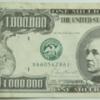I would never go for an expensive "westernised" machine again , got a whole herd of chinese machines that work exceptionally , easy and cheap to fix . engraving quality is as good as any other machine's , speed a little slower , price a WHOLE lot cheaper
my 2 shenhuis have been going strong for 5 years with only lens and tube replacements and my longtai's have performed flawlessly .. a single tube replacement due to operator error is the only maintenance
The machines in my facility are borderline "abused" in terms of maintenance and it make little difference as to their performance.
I bought my 6 x 60w 600x400 Longtais for under $15k door to door...(for all 6) , we have 4 commissioned and 2 still in the crates..
Lasers are tools , not investments .. at $2.5k per machine , if i get a years worth of high production I have made 10x their worth per machine or more.. if i had a catastrophic failure on any one , I would just dump it and buy another.
Rodney Gold, Toker Bros trophies, Cape Town , South Africa :
Roland 2300 rotary . 3 x ISEL's ..1m x 500mm CnC .
Tekcel 1200x2400 router , 900 x 600 60w Shenui laser , 1200 x 800 80w Reci tube Shenhui Laser
6 x longtai lasers 400x600 60w , 1 x longtai 20w fiber
2x Gravo manual engravers , Roland 540 large format printer/cutter. CLTT setup
1600mm hot and cold laminator , 3x Dopag resin dispensers , sandblasting setup, acid etcher





 Reply With Quote
Reply With Quote










